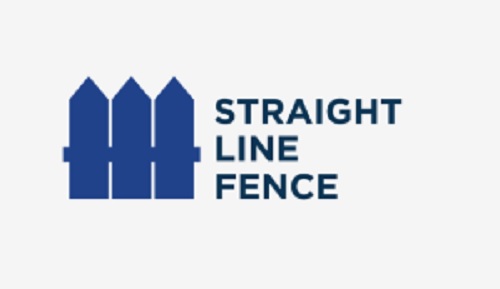The automotive industry is fast-paced, competitive, and constantly evolving, making efficient inventory management crucial for automotive dealerships. In today’s landscape, managing inventory effectively is not just about keeping track of stock; it’s about striking the perfect balance between supply and demand, reducing costs, and maximising profitability. In this article, we’ll explore the best practices in automotive inventory management to help dealerships enhance their operations, reduce overhead costs, and drive higher profits.

Why Automotive Inventory Management Matters
The importance of inventory management in the automotive industry cannot be overstated. The efficiency with which dealerships manage their vehicle inventory directly impacts their bottom line. An overstock of vehicles ties up capital, increases storage costs, and leads to depreciation losses. Conversely, insufficient stock can result in missed sales opportunities and dissatisfied customers. By implementing the best inventory management practices, dealerships can optimise stock levels, reduce costs, and increase profitability.
Key Challenges in Automotive Inventory Management
Managing inventory for automotive dealerships comes with unique challenges:
- Demand Variability: Consumer preferences and economic factors can shift demand quickly, leading to unsold inventory.
- Depreciation: Vehicles lose value the moment they are driven off the lot, and the longer they remain unsold, the greater the depreciation.
- Holding Costs: Storage, insurance, and maintenance costs accumulate the longer a vehicle remains in inventory.
- Obsolescence: The automotive market is highly competitive, and models can become outdated quickly, leading to markdowns and losses.
Addressing these challenges requires dealerships to adopt strategic inventory management techniques tailored to the automotive sector.
Best Practices for Effective Automotive Inventory Management
1. Utilise Data Analytics to Forecast Demand
In today’s data-driven world, leveraging data analytics is essential for optimising automotive inventory management. By analysing historical sales data, market trends, and economic indicators, dealerships can accurately forecast demand. Predictive analytics tools can help dealerships determine which models, colours, and features are likely to sell quickly, allowing them to make informed purchasing decisions.
Tip: Invest in robust dealership management software (DMS) that integrates predictive analytics to get real-time insights into market trends and customer preferences.
2. Optimise Stock Levels to Reduce Carrying Costs
Maintaining an optimal level of stock is crucial for reducing carrying costs. Dealerships should regularly review their inventory turnover rates and adjust their purchasing strategies accordingly. Holding too many vehicles can lead to increased costs, including storage, insurance, and depreciation, while too little inventory can result in missed sales.
Strategy: Implement a just-in-time (JIT) inventory approach where possible. This involves ordering vehicles based on real-time demand, reducing the risk of overstocking and freeing up cash flow.
3. Embrace Digital Retailing and Online Sales Channels
The shift towards digital retailing has transformed the way consumers purchase vehicles. Dealerships that embrace online sales channels can not only expand their market reach but also optimise their inventory management. By integrating online inventory with their physical lots, dealerships can quickly adjust to consumer demand and move units more efficiently.
Action Point: Invest in an omnichannel strategy that includes a robust online presence, allowing customers to browse inventory, schedule test drives, and make purchases online.
4. Implement Efficient Vehicle Rotation Strategies
Stagnant inventory is costly for dealerships, leading to depreciation and reduced profitability. To combat this, dealerships should employ vehicle rotation strategies. Regularly rotating stock ensures that all vehicles receive exposure on the showroom floor, reducing the likelihood of vehicles becoming stale.
Pro Tip: Use inventory management software to track vehicle age and implement automatic alerts for vehicles that have been on the lot for too long, prompting timely price adjustments or promotional campaigns.
5. Leverage Market Insights for Strategic Pricing
Pricing strategies can significantly impact the turnover of inventory. Dealerships should use market insights to set competitive prices. Factors like seasonality, regional demand, and manufacturer incentives should be considered when setting prices. Regularly adjusting prices based on market conditions can help move inventory more quickly, reducing holding costs.
Tactic: Employ dynamic pricing models that automatically adjust prices based on demand, competitor pricing, and inventory levels to optimise profit margins.
6. Conduct Regular Inventory Audits
To maintain an accurate view of their inventory, dealerships should conduct regular inventory audits. This helps identify discrepancies, reduces the risk of theft or loss, and ensures that the inventory data remains up-to-date. Automating the audit process with inventory management software can improve accuracy and reduce the time spent on manual checks.
Tip: Schedule audits quarterly and leverage barcode or RFID technology to streamline the process and minimise human error.
7. Focus on Vehicle Lifecycle Management
Managing the vehicle lifecycle effectively is critical to maximising profitability. Dealerships should track each vehicle from acquisition to sale, ensuring that pricing strategies align with the vehicle’s age and market demand. Vehicles that are nearing the end of their lifecycle should be prioritised for promotions or bundled sales to clear out older inventory and make room for new models.
Action Point: Implement a lifecycle management strategy that includes automated alerts for markdowns, end-of-life promotions, and trade-in offers.
8. Foster Strong Relationships with Manufacturers and Suppliers
Building strong partnerships with manufacturers and suppliers can give dealerships better access to inventory, exclusive promotions, and better pricing. Regular communication with suppliers ensures that dealerships can adjust their inventory levels in response to changing market conditions quickly.
Strategy: Negotiate flexible terms with suppliers, including options for returns or exchanges on slow-moving inventory.
The Role of Technology in Automotive Inventory Management
The integration of technology in automotive inventory management has revolutionised the way dealerships operate. Here’s how technology can enhance efficiency:
- Automated Reordering Systems: Reduce stockouts by automatically reordering popular models.
- Real-Time Tracking: Provide visibility into inventory levels, allowing dealerships to make data-driven decisions.
- Customer Relationship Management (CRM): Integrate CRM with inventory management systems to align sales strategies with customer demand.
Investing in technology not only improves inventory accuracy but also helps dealerships respond to market changes swiftly, thus staying ahead of the competition.
Conclusion
Effective automotive inventory management is vital for reducing costs and maximising profitability in today’s competitive market. By leveraging data analytics, embracing digital retailing, optimising stock levels, and utilising technology, dealerships can transform their inventory management processes. The best practices outlined in this guide will help dealerships strike the right balance between inventory costs and customer satisfaction, leading to increas profitability.


